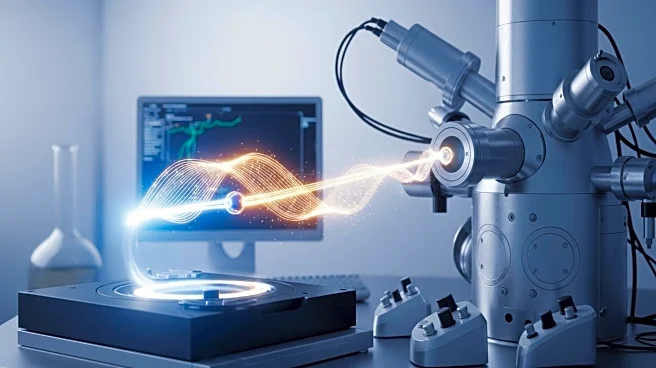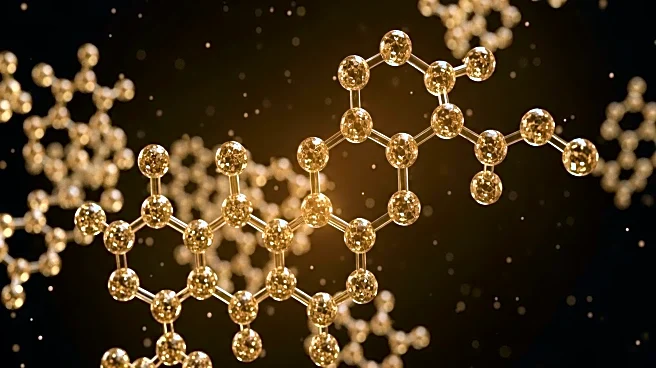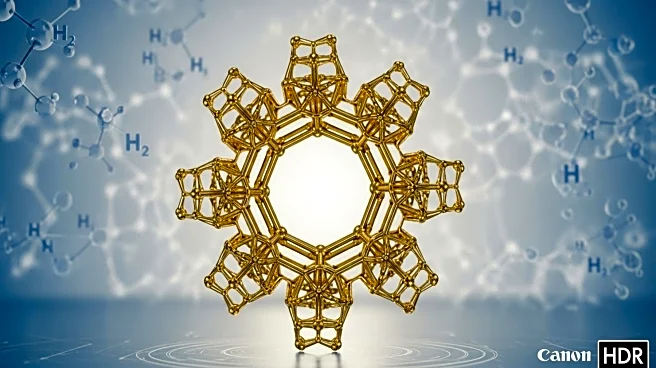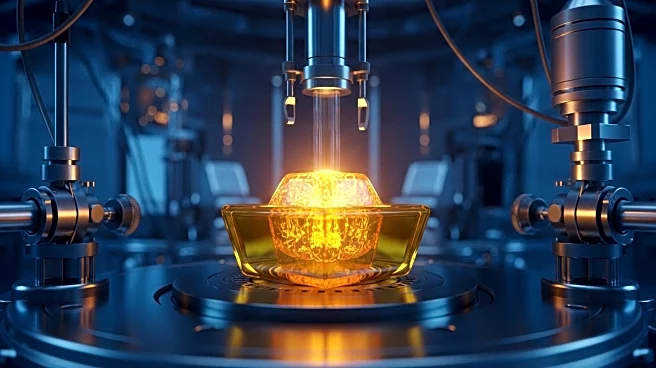What is the story about?
What's Happening?
For the first time, scientists have successfully captured the movement of a single electron during a chemical reaction using ultrafast X-ray flashes. This groundbreaking study, published in Physical Review Letters, involved imaging a valence electron in an ammonia molecule as it broke apart. The research was conducted at the SLAC National Accelerator Laboratory, where scientists used X-ray scattering to observe the electron's motion. This achievement provides new insights into the behavior of valence electrons, which are crucial for chemical reactions, and could lead to advancements in drug design, cleaner chemical processes, and more efficient materials.
Why It's Important?
The ability to directly image electron movement during chemical reactions is a significant advancement in the field of particle physics and chemistry. Understanding how valence electrons behave can lead to the development of better pharmaceuticals, more sustainable chemical processes, and innovative materials. This research opens new possibilities for scientists to manipulate chemical reactions at the atomic level, potentially revolutionizing industries such as medicine, energy, and materials science. The findings could also enhance our understanding of quantum mechanics and electron dynamics, paving the way for future scientific breakthroughs.
What's Next?
Researchers aim to adapt this imaging technique for use in more complex, three-dimensional environments that mimic real tissues. This advancement could bring the technology closer to applications in regenerative medicine, such as growing or repairing tissue on demand. Further studies will likely explore the use of this method in various chemical reactions and materials, expanding its potential applications across different scientific fields.
Beyond the Headlines
This research highlights the intersection of quantum physics and chemistry, offering a deeper understanding of electron dynamics and their role in chemical reactions. It underscores the importance of technological advancements in imaging techniques, which can provide unprecedented insights into atomic-scale processes. The study may also prompt discussions on the ethical implications of manipulating chemical reactions at such a fundamental level, particularly in fields like medicine and materials science.
AI Generated Content
Do you find this article useful?














